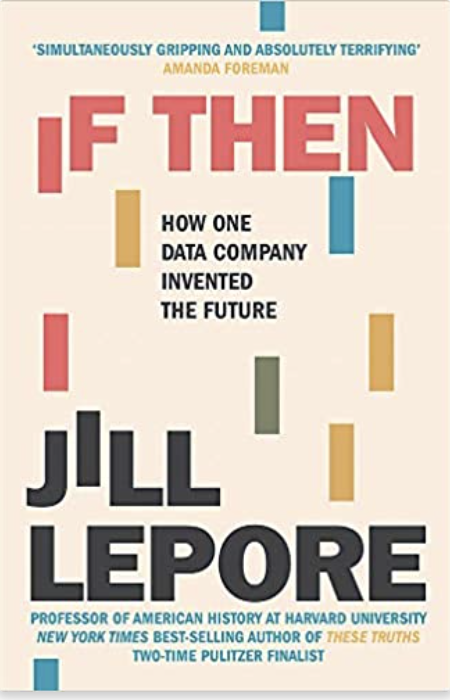
Game of Prediction


In 1960 America’s new leader John F Kennedy ‘s winning presidential election was widely reported that the presidency has been clinched with the help of a “secret weapon” : a super computer that crunched troves of data to profile voters , allowing Kennedy to better target his political messaging before the polls opened.
Borrowing from psychological warfare, they used computers to predict and direct human behaviour, deploying their “people machine” from New York, Cambridge and Saigon for clients that included Kennedy’s presidential campaign, the New York Times, Young and Rubicam, and during the Vietnam War, the Department of Defence.
The ominous technology was the creation of Simulmatics Corporation, along forgotten tech company that pioneered the use of data science in politics and in the process invented the future according to Harvard Professor and New Yorker writer Lepore.
If then, charts how Simulmatics laid some of the earliest foundations for the field of predictive analytics, today exerted by Internet platforms, advertisers and political strategists to help sell consumer products or election candidates.
The chaotic hand of scientists, psychologists and slick Madison Avenue advertising pundits have been the unknown grandfathers of Google and Facebook with their algorithms.
Commentators accused the Trump campaign of using a “weaponised AI propaganda describing a new and “nearly impenetrable voter manipulation machine:, write Lepore “:new hardly, Simulmatics invented that machine in 1959.” Facebook continues its soul searching in the wake of Cambridge Analytics scandal and highly polarised November US Presidential election.
Launched in 1959, Simulmatics introduced big data and computer into politics against testy backdrop of Eisenhower-Kennedy-Nixon cold war paranoia, civil rights protests and student anti-war movements. Spearheaded by Ed Greenfield – a man who “sold nothing so well as himself” = and dreamy of using predictions to defeat communism, protect democracy and win the Vietnam war.
He planned to be able to tell a candidate “the consequence of taking a position on any issue, anywhere, state by state, county by county, voter by voter, issue by issue. To do so it would split up US population into 480 voter types , cross-checking these against previous voting returns, for forecasting future behaviour.
Simulmatics collapsed into bankruptcy in 1970, yet the mission would become a ,blueprint for millions of companies in the profit seeking private sector, from advertisers to banks, Lepore writes.
“Collect data, write codes, Direct patterns, target ads, predict behaviour, direct action, encourage consumption, influence elections”.
Despite its visionary acclaim, Simulmatics consistently carried out shambolic work, one contract in Saigon was aimed at helping US Department of Defense work out how to win over Vietnamese “hearts and minds”, as Simulmatics ran against translation issues, un co-operative locals, then “allegations of negligence, malfeasance and even fraud” as some of their methods were embarrassing. In one instance, the company hired a Freudian psychoanalyst to analyse a handful of Vietnamese citizens. His conclusion was that they all had Oedipal issues. The contract was pulled. Another domestic effort, designed to help local authorities in Rochester, New York, predict when race related riots were likely to happen, failed to produce any concrete results. Even Kennedy Campaign argued they did not follow company’s recommendations in 1960, despite commissioning research from the group,
Lepore highlights many Simulmaics staffers and their long-suffering , intellectually frustrated wives as alcoholism and mental illness are commonplace as their moral compasses waivers and the world around them polarises and bleak, with the drawn out war in Vietnam and assassinations of JFK, Martin Luther King, and Bobby Kennedy weighing heavy.
In Saigon headquarters of Simulmatics Charles Ramond gives a lavish party for expat, “Inside th Villa Ramond was serving cocktails, while outside people were dying on the streets blasted, dismembered, splattered.”
Lepore blames the short comings and failures to “the technological limitations of its day” such as source data and weak models .
In the epilogue, she casts Simulmatics as building “ a machine that applies the science of psychological warfare to everyday life ..manipulates attention.., divides voters, atomises communities, and undermines democracy”.
For all of Simulmatics’ efforts at automating prediction, Ithiel de Sola Pool, an executive and an MIT academic with a focus of social network, proves to be the most accurate predicting machine- forseeing the data mad and near totalitarian twentyfirst century” that he was instrumental in creating according to Lepore.
If Then: How the Simulmatics Corporation Invented the Future by Jill Lepore, John Murray £20/ Liveright Publishing $28.95, 421 pages.
